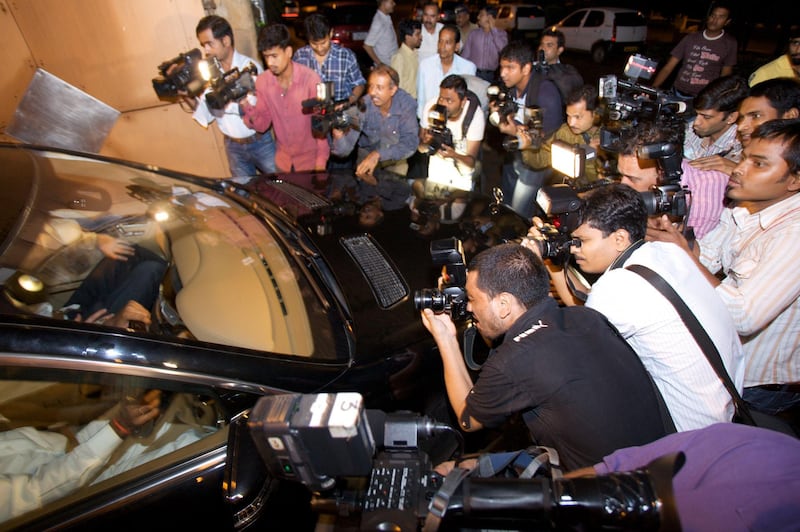India is obsessed with its stars – that's a given – but who feeds the beast? The nation's celebrities shell out top PR dollar for an untarnished image in the media, but there is now a magazine and news culture in Bollywood that keeps high society on its toes. We meet the magazine editors, reporters and photographers who built the Bollywood showbiz news industry over the past five decades, one Mumbai night at a time.
The salacious start: The 1970s
If tracking when India started gobbling down news about its stars, one needs to talk to Shobhaa De, the feisty former editor of Stardust, a magazine from the 1970s. Although the glossy had its fair share of photoshoots, it was the catty snippets about celebrity affairs and rocky marriages that made its "diary" pages the talk of the town.
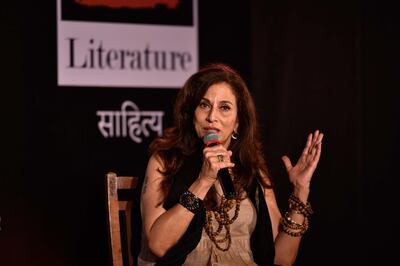
Its salacious exposes so enraged the stars that at its peak in 70s Bollywood, megastar Amitabh Bachchan banned the magazine from interviewing him for seven years. In an era when India was still shaking off its colonial past, De had the nerve to introduce an entirely new language to India's Tower of Babel: Hinglish.
Hinglish was a riotous hybrid of English laced with Hindi words. To a Bollywood-obsessed readership, this was a linguistic revelation, a turn of phrase that gave entertainment journalism (and local paparazzi) a language to call its own. "Stardust was sassy and smart, witty and wicked. It spawned many imitators and introduced a delicious new language: Hinglish," De tells us. "Proud to be known as the grandma of Hinglish, Stardust was the big game-changer. After its phenomenal success, every publication in India got 'Stardust-ised.'" But, despite the meteoric rise of the magazine, the road was often rocky.
De, who went on to become India's bestselling novelist (and is often referred to as India's Jackie Collins in the late 80s and early 90s), had to work with massive Bollywood egos and fend off the occasional lawsuit. "We dealt with lawsuits on a fairly regular basis. Most went nowhere. The defamation laws being as ambiguous as they still are, we were spared. But let me assure you, not a single story or even gossip item was manufactured.
"Most of the time, the source of our saucy stories was the star/producer/director. Bollywood's most successful producer, Raj Kapoor, was furious when we dissed Satyam Shivam Sundaram and dismissed it as 'Satyam Shivam Boredom.' Peeved stars and starlets did storm into the office a few times. But for the most part, they didn't dare step into our 'cat house'," recalls De, who also penned Selective Memory in 1998, a bestselling memoir about her dealings with Bollywood's stars.
Tabloid Nation: The 1980s
With Stardust blazing the trail, a rash of tabloids emerged in the 1980s – a boost for India's burgeoning paparazzi. Unlike broadsheets that were aimed at a national (and more highbrow) readership, these newbies targeted the young and the urban. Mid Day, which launched in 1979, even boasted a "Page 3 Girl" and a "Man Friday". The Afternoon Despatch & Courier was another tabloid that also began in this decade. The much-coveted "diary" format that was popularised by magazines such as Stardust went legit with the arrival of the compact English-language newspaper.
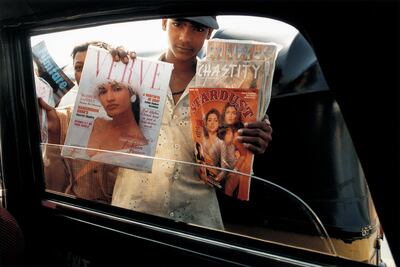
Denizens of Mumbai who are obsessed with the lives of the rich, owe a lot to the indefatigable spirit of veteran party reporter Marcellus Baptista. The man has, after all, been reporting on the city's nightlife for the past 37 years – and there is no sign of him stopping.
The names of his daily columns might have changed from "After 8" to "Goss & Gloss" in recent years, but Baptista, who lives with his 102-year-old mother in the trendy district of Bandra, continues to have has his work cut out for him come dusk. Every night, Baptista has at least three events to cover, he says. "I may not be the life of the party, but the party is my life. Yes, I write about parties for a living. Someone has got to do it. If the party stops in Mumbai, I am finished. I will lose my job and be forced to take up a 9-to-5 gig, meaning the conventional 9am to 5pm one, as opposed to the actual 9-to-5 that I am used to, meaning 9pm to 5am.
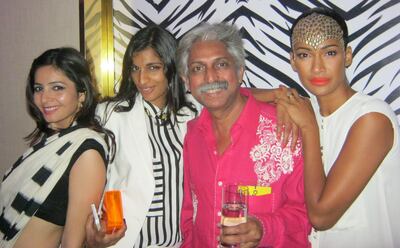
“They call me a ‘Page 3 journalist’. I don’t call myself anything. All I know is that my day starts at night. When my banker friends are returning home, that’s the time I have to get ready for a hard night’s work.
"I shave in the evening, since if I did so in the morning there would be stubble at night and it wouldn't look good at all. I run a comb through my thick moustache and comb my hair in such a way that it looks carefully ruffled with just the right amount of salt-and-pepper strands falling across my forehead."
The birth of India’s first paparazzi photographer: The 1990s
This decade saw the rise of Mumbai snapper Yogen Shah, described as "India's first paparazzo photographer". This was a heady period by any standard – India ceased being a socialist nation in 1991, and with the arrival of cable TV and multinationals, partying became mainstream. The nation's biggest newspaper, The Times of India, even started a supplement called Bombay Times, to regularly give column inches to a gaggle of local supermodels, socialites, actors and starlets.
Featuring consular bashes and A-listers in designer clothes, its Page 3 became the space to be photographed for, and Shah was the one doing the honours. "It dawned on me that I didn't need to be inside the party to grab a shot of our glitterati," he tells me. "I could merely stand outside the gates with my camera."
The noughties and beyond
It was in the noughties that intrepid photographer, Shah, who started out as an accountant, truly honed his craft by devising a technique that allowed him to be invisible and snap unsuspecting stars on a night out.
“At Aurus [Bollywood’s favourite restaurant from the past decade], I would hire a taxi and sit next to the cab driver. I would have the taxi parked right outside the door with my camera perched on the dashboard. When the star stepped out, I’d ask the cab driver to put the headlights on. The star would be caught unaware and I would have a bright and shiny photograph to pitch to editors.”
Shah, 57, now has a crew of about a dozen photographers who haunt film premieres, nightclubs and the gates of star residences. That said, the tag of "paparazzi photographer" does bother him. "I don't want to be known as a paparazzi photographer. I want to be known as a serious photographer," he says.
Not as reticent about being celebrity news-driven is journalist Vickey Lalwani. From the noughties onwards, Lalwani riled up the stars by writing about scandals in an age when entertainment news is often manufactured by the PR teams working on behalf of the rich and famous.
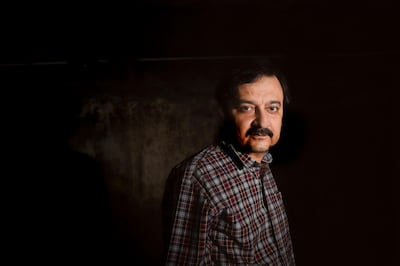
Previously a maths tutor, Lalwani's life has completely changed, thanks to his insatiable appetite for gossip. "I started my career by writing letters to the editor of The Afternoon. Its editor, the late Behram Contractor [who adopted the moniker Busybee for his column on party life in Mumbai], was so impressed with my writing he invited me to join the tabloid. The rest, as they say, is history."
And Lalwani has indeed made history. In April, India was again abuzz with one of his stories. Kapil Sharma, one of India's most celebrated comedians, was unhappy with Lalwani's report on his fading career. Sharma made a phone call and lost his temper, delivering an expletive-laden monologue on Lalwani's brand of reporting. But the journalist, not one to be fazed by the tantrums of a star, recorded the conversation and broadcast it to the delight of millions.
Because in Mumbai city, it’s showbiz or no biz.
______________________
Read more:
'I would love to play a dark character': Chitrangda Singh on #MeToo and roles for women in Bollywood
Salman Khan's 'Bharat' wraps shooting in Abu Dhabi
#MeToo names in the frame must be properly investigated
'India's Got Talent' returns for its eighth year
______________________
